MNC 2025 Invited Speakers List |
2-1: Nanocarbons & 2D Materials |
Prof. Takashi Ikuno, Tokyo University of Science, Japan

Paper Title
Optoelectronic Synaptic Devices Based on Nanocomposite Materials for Physical Reservoir Computing
Short Biography
Dr. Takashi Ikuno received his Ph.D. degree in Electronic Engineering from Osaka University, Japan, in 2004. From 2004 to 2007, he worked as a postdoctoral researcher at the University of California, Berkeley, and Lawrence Berkeley National Laboratory. From 2007 to 2016, he was a senior researcher at Toyota Central R&D Labs, Inc. Since 2016, he has been an Associate Professor at Tokyo University of Science. His research interests include carbon-based nanomaterials, optoelectronic devices, energy conversion devices, and neuromorphic/intelligent devices. |
Prof. Hiroo Suzuki, Okayama University, Japan
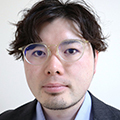
Paper Title
Structural Control in Monolayer TMDCs: From Millimeter Growth to Atomic Engineering
Short Biography
Hiroo Suzuki is a Research Associate Professor at the Institute of Academic and Research, Okayama University. He received his Ph.D. in Electronic Engineering from Tohoku University in 2018 and conducted postdoctoral research as a JSPS Overseas Research Fellow at RWTH Aachen University, Germany (2018–2020). His research focuses on two-dimensional materials and nanostructures for electronic and optoelectronic applications. He has received several awards, including the Kao Science Encouragement Award (2025), the Osawa Encourage Award (2023), and the Kenjiro Takayanagi Research Encouragement Award (2023). |
2-2: Nanodevices |
Prof. Atsutake Kosuge, UTokyo, Japan
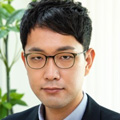
Paper Title
Digital Neuromorphic Processor with Orthogonal 3D Chip Stacking
Short Biography
Atsutake Kosuge received the Ph.D. degree in electrical engineering from Keio University, Yokohama, Japan, in 2016. From 2014 to 2017, he was a JSPS Research Fellow at Keio University. From 2017 to 2020, he held research positions at Hitachi Ltd., Tokyo, Japan, and Sony Corporation, Tokyo. In 2021, he joined the Systems Design Laboratory (d.lab) as an Assistant Professor, The University of Tokyo, Tokyo, Japan. His research interests include energy-efficient computing and 3D chip integration technologies. |
Prof. Yuichiro Ando, Osaka Metropolitan University, Japan

Paper Title
Spin Current-Driven Functionality in Semiconductor Devices
Short Biography
Yuichiro Ando is a professor at the Department of Physics and Electronics, Osaka Metropolitan University. He received his Ph.D. from Kyushu University in 2010. After a JSPS postdoctoral fellowship, he held positions at Osaka University (Assistant Professor, 2012), Kyoto University (Assistant Professor, 2014; Associate Professor, 2016), and moved to his current position in 2024. He demonstrated room-temperature spin injection into silicon and has contributed to electrical and dynamical spin control in group-IV semiconductors. His research focuses on semiconductor spintronics and applications of topological materials. |
2-3: Nanofabrication |
Prof. Koki Sano, Shinshu Univ., Japan
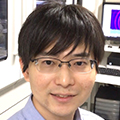
Paper Title
Self-assembly strategies of nanosheets for the fabrication of functional soft matter systems
Short Biography
Koki Sano is an assistant professor at Shinshu University, Japan. He received his PhD from the University of Tokyo in 2019. After working as an SPDR researcher at RIKEN CEMS and a JST PRESTO researcher, he launched his independent research group at Shinshu University in 2021 as a principal investigator. He is also currently a JST FOREST researcher. His research focuses on the design and synthesis of functional soft materials and biomimetic systems based on nanomaterials, polymers, and liquid crystals. |
Prof. Johnny C. Ho, City Univ. of Hong Kong, Hong Kong
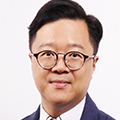
Paper Title
Tellurium-Based Electronics
Short Biography
Johnny C. HO is the Associate Vice-President (Enterprise), a Chair Professor in the Department of Materials Science and Engineering, and a core member in the State Key Laboratory of Terahertz and Millimeter Waves at the City University of Hong Kong. He also holds a joint professorship at the Institute for Materials Chemistry and Engineering at Kyushu University, Japan. He received his BS degree in Chemical Engineering, and MSc and PhD degrees in Materials Science and Engineering at the University of California, Berkeley, USA, in 2002, 2005, and 2009, respectively. Between 2009 and 2010, he worked as a postdoctoral researcher at the Nanoscale Synthesis and Characterization Laboratory at Lawrence Livermore National Laboratory, USA. In 2010, he joined the faculty at City University of Hong Kong. His research primarily focuses on developing semiconductor nanomaterials with various dimensionalities and compositions, aiming to unravel their structure-composition-surface-property relationships for high-performance electronic and energy-harvesting devices. He has published over 300 papers, including Nature Materials, Nature Communications, etc. His work has been honored with numerous awards, including the Semi Grand Prix at the Silicon Valley International Invention Festival in 2024, the Hong Kong Research Grant Council's Research Fellow Award in 2020, and the World Cultural Council Special Recognition Award in 2018. |
2-4: Inorganic Nanomaterials |
Prof. Tomoaki Yamada, Nagoya University, Japan
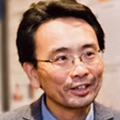
Paper Title
Ferroelectric nano-domains and their electromechanical and photonics applications
Short Biography
Tomoaki Yamada is a professor at Department of Energy Engineering, Nagoya University. He received his Ph.D. degree in Material Science and Engineering from Tokyo Institute of Technology in 2003. In 2004, he joined the Ceramics Laboratory of the Swiss Federal Institute of Technology at Lausanne (EPFL). He became an assistant professor at Tokyo Institute of Technology in 2008, then moved to Nagoya University as an associate professor in 2010. Currently, he is also a visiting professor of MDX Center for Element Strategy at Institute of Science Tokyo. His domains of experience and expertise are ferroelectric thin films and nanostructures, and their applications. |
Prof. Takayoshi Katase, Institute of Science Tokyo, Japan
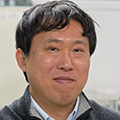
Paper Title
Mixed-Anion Oxides for Sustainable and High-Performance Thermoelectrics
Short Biography
Takayoshi Katase is currently an Associate Professor at MDX Research Center for Element Strategy, Institute of Integrated Research, Institute of Science Tokyo, Japan. He received his Ph.D. in Engineering from Tokyo Institute of Technology in 2012. From 2013 to 2016, he was an Assistant Professor at Research Institute for Electronic Science, Hokkaido University, Japan. From 2017 to 2023, he was an Associate Professor at Laboratory for Materials and Structures, Institute of Innovative Research, Tokyo Institute of Technology, Japan. His research fields include material science, solid-state chemistry, thin-film material, superconductor, oxide electronics, thermoelectric material, and phonon engineering. |
2-5: Organic Nanomaterials |
Prof. Dong Ryeol Whang, Hannam Univ., Korea
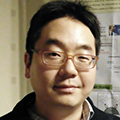
Paper Title
Tailored Organic Ligands for Electroluminescent Quantum Dots
Short Biography
Dong Ryeol WHANG is currently an associate professor at Hannam University, Korea. He received PhD from Seoul Nationl University in 2014 (supervisor: Prof. Soo Young Park). He joined Prof. Niyazi Serdar Sariciftci group in 2016 and served as an assistant professor until 2020. His research expertise and interests lie in the areas of optoelectronic materials for light-emitting diodes and artificial photosynthesis. His research asset comprises fine ligand synthesis, organometallic synthesis, QM/MD-based calculational chemistry, steady-state/time-resolved spectroscopy, and analytical chemistry. |
2-6: Nano Surfaces, Interfaces, and Advanced Nano Metrology |
Prof. Chih-Wei Chang, National Taiwan University, Taiwan
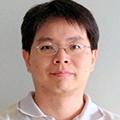
Paper Title
ZEM: a new technique for electron microscopy and spectroscopy
Short Biography
Dr. Chih-Wei Chang, an associate research fellow at National Taiwan University’s Center for Condensed Matter Sciences, focuses on experimental nanoscale heat transfer and electron microscopy. Currently, he is interested in employing the bolometers that were used for thermal transport measurements in advancing the techniques of electron microscopy. The technique, named ZEM, enables direct determination of atomic number (Z) and is especially sensitive to light elements, such as hydrogen storage and vacancy formation in palladium. He is currently exploring more applications for ZEM, including its potential in electron spectroscopy. |
3: Nanoimprint, Hybrid-NIL, Biomimetics, and Functional Surfaces |
Prof. Shinya Yoshioka, Tokyo University of Science, Japan
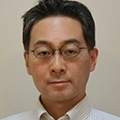
Paper Title
Network structures based on triply periodic minimal surfaces in biological systems: structural analysis and optical effects
Short Biography
Dr. Yoshioka received his Ph.D. from Hokkaido University, Japan, in 1998. After working as a postdoctoral researcher at Osaka University, he was appointed assistant professor there in 2000. In 2015, he joined the Faculty of Science and Technology at Tokyo University of Science as an associate professor and was promoted to professor in 2020. His research focuses on submicron structures and their optical effects in biological systems. |
Dr. Mirko Lohse, micro resist technology, Germany
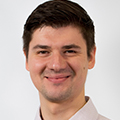
Paper Title
Remember the past and prepare for the future: 25 years of NIL material innovations
Short Biography
Dr. Mirko Lohse obtained his PhD in organic chemistry at the Humboldt university Berlin in 2015. Afterwards he joined MRT first as research scientist, working on the development of biocompatible NIL materials before becoming project manager in 2017. In 2020, Dr. Mirko Lohse became operations manager in the NIL team of MRT responsible for quality control and project to product transfer. Since 2022, he is unit manager of the NIL department at MRT responsible for customer relations, strategic planning, business development and other unit relevant tasks. |
Dr. Theodor Nielsen, NIL Technology, Denmark

PAPER TITLE
Nanostructures by nanoimprint in optics for consumer electronics
Short Biography Theodor Nielsen is the co-founder and CEO of NIL Technology (NILT), a company he established in 2006 alongside Brian Bilenberg as a spin-off from the Technical University of Denmark (DTU). Theodor holds an engineering degree from DTU and has been a prominent figure in the field of nanoimprint lithography for nearly two decades, frequently speaking at conferences and workshops on the subject.
Under Theodor's visionary leadership, NILT has evolved from being renowned for creating masters for nanoimprint lithography to becoming the leading metalens company, fully integrated from design to manufacturing. His strategic direction has been instrumental in NILT's success, resulting in the filing of over 70 unique patent applications and the completion of more than 10 European-funded research projects. Additionally, NILT has successfully executed over 1000 commercial orders and secured more than 70 million euros in investor funding.
In 2024, Theodor led the sales process of NILT to Radiant Opto-Electronics Corporation, a transaction that was completed in 2025. His dedication and innovative approach have significantly contributed to the advancement of the nanoimprint lithography industry and the growth of NILT.
|
4: BioMEMS, Lab on a Chip, and Nanobiotechnolog |
Prof. Koji Sumitomo, University of Hyogo, Japan

Paper Title
Physical Properties of Lipid Bilayers and Their Applications to Biosensing
Short Biography
Koji Sumitomo is a Professor at University of Hyogo, Japan. He received his B.E. (1986), M.E. (1988), and Dr.E. (1991) degrees in Electronics Engineering from Osaka University. In 1991, he joined NTT Basic Research Laboratories, where he worked on surface science and nanobiotechnology. Since 2016, he has been with the University of Hyogo as a professor. His current research focuses on biomembranes, artificial cells, and biosensing devices, integrating approaches from physics, materials science, and biotechnology. He is dedicated to interdisciplinary research and the education of young scientists.
|
5: Microsystem Technology and MEMS |
Prof. Yoshishige Tsuchiya, Univ. of Southampton, UK
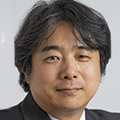
Paper Title
Nano-Opto-Electro-Mechanical-Systems (NOEMS) and MEMS/NEMS-Photonics Integration
Short BiographyDr Yoshishige Tsuchiya is an Associate Professor in School of Electronics and Computer Science, University of Southampton, UK. He received PhD from the University of Tokyo and then joined the Tokyo Institute of Technology as an Assistant Professor under the ‘Neo-Silicon’ project. Since 2008 in Southampton, he has been focusing on Si NEMS technologies and currently leading the Chist-Era NOEMIA project to develop NOEMS for energy-efficient computing. He is also leading UK-Japan HetMEPS to develop MEMS/NEMS-photonics integration platform. He is a Fellow of HEA, and a member of IoP, IET, and IEEE. He has published 190 peer-reviewed papers.
|
6: Atomic Layer Processing (ALP) |
Dr. Fumikazu Mizutani, Kojundo Chemical Laboratory
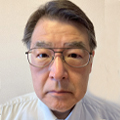
Paper Title
ABC-type atomic layer deposition using cyclopentadienyl-based precursors
Short Biography
Fumikazu Mizutani is a director and chief researcher at Kojundo Chemical Laboratory Co., Ltd. He is currently working on the research and development of precursors and their processes for atomic layer deposition. He received Doctor of Engineering at the university of Tokyo in 1990. In 1990, he joined Mitsubishi Petrochemical Co., Ltd., which merged to become Mitsubishi Chemical Corporation in 1994. At Mitsubishi Chemical, he was involved in R&D of battery materials, anodization, and post-CMP cleaner. In 2016, he moved to Kojundo Chemical Laboratory and began R&D on precursors for ALD.
|
Dr. Chia-Tsong Chen, AIST, Japan
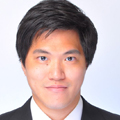
Paper Title
PEALD ultrathin InOx FETs for BEOL transistors: impact of excess oxygen and acceptor-like trap
Short Biography
Chia-Tsong Chen is a researcher of National Institute of Advanced Industrial Science and Technology (AIST), Tsukuba, Japan. He received Ph.D. degree from the University of Tokyo in 2022. His research interest includes innovations for advanced CMOS technologies and back-end of line monolithic 3D integration.
|